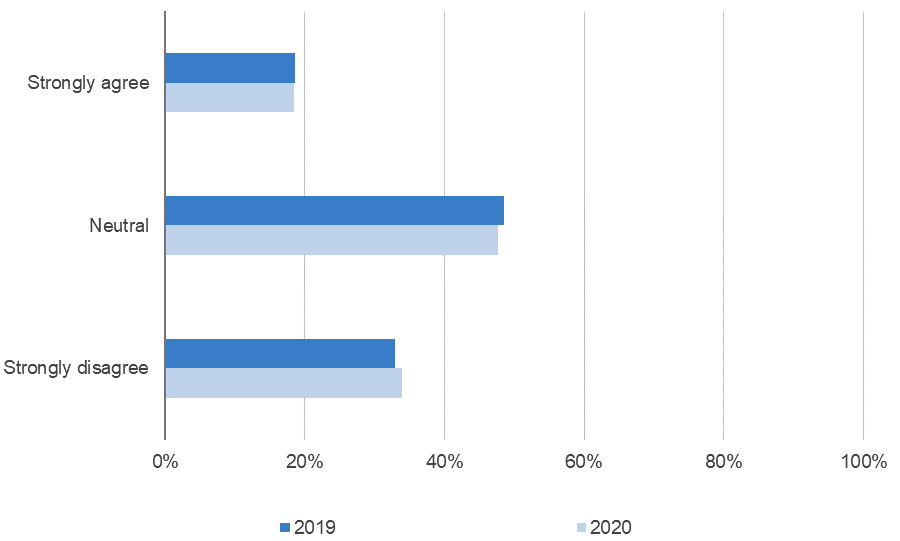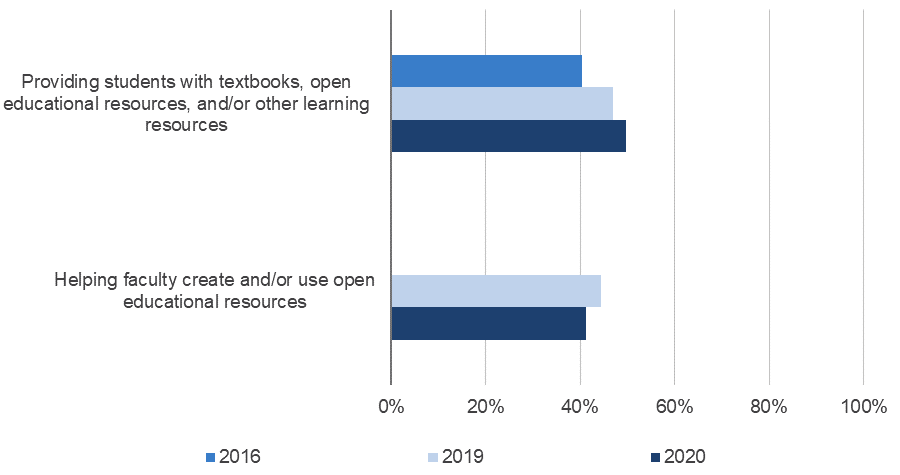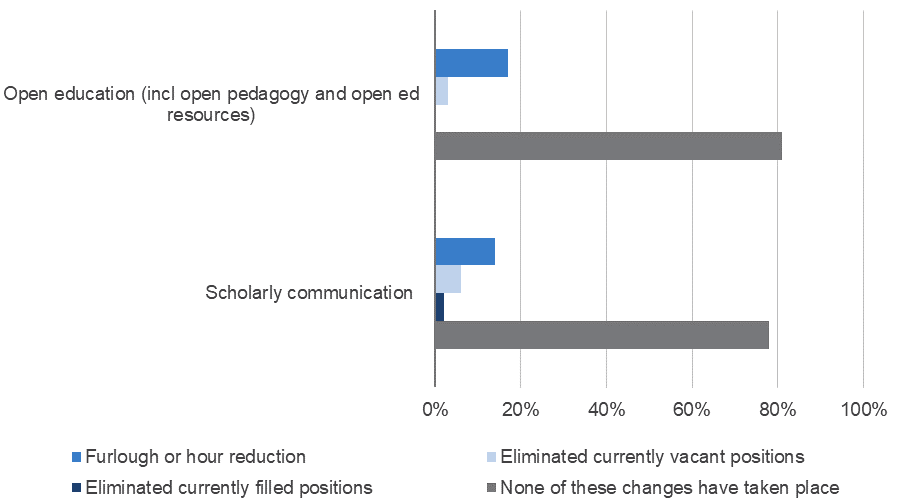Not Much Has (Yet) Changed
Open Access Priorities and the Impact of COVID-19
As it became clear at the start of the COVID-19 pandemic that research on the virus was greatly needed by both scholars and the general public, many publishers quickly opened up access to previously paywalled content. Open access sharing of COVID-19 data became relatively more common with organizations such as the National Institutes of Health compiling and sharing databases of articles, enabling researchers to work nimbly and collaboratively in new ways. For those whose research was unrelated to the pandemic, emergency open access services from providers like HathiTrust also facilitated greater teaching and research continuity while physical libraries remained closed. In this changed landscape, have library leader perspectives on the value of investments in open access shifted? In this post, I explore the answer to this question through the lens of our newly-released library director survey.
In fall 2019, just prior to the outbreak of the pandemic, we asked participants for the first time whether bundling open access publishing fees (i.e. APCs) along with subscription costs in licensing agreements would be a high priority when their electronic journals come up for renewal. We asked the identical question in a similar survey fielded in fall 2020. In both the 2019 and 2020 surveys a similar percentage of library directors agreed that this was a high priority (19 percent and 18 percent respectively), and these results hold across different institution types. See Figure 1. The prioritization of open access in licensing agreements does not appear to have been greatly impacted by the COVID-19 pandemic, likely due to limitations in library e-resource materials budgets, even though open access usage by library patrons has increased.
Figure 1. When our electronic journal licenses come up for renewal, it is a high priority for our library to bundle open access publishing fees (i.e. APCs) along with subscription costs in the licensing agreement. Please use the 10 to 1 scales to indicate how well each statement below describes your point of view.
Percentage of respondents that selected each response option, by survey cycle.

We also asked library directors to what extent their libraries prioritize helping faculty create and/or use open educational resources (OER) as well as providing students with textbooks, OER, and/or other learning resources. While many areas of work had to be deprioritized as libraries shifted their focus to deal with the immediate impact of the pandemic, the importance of OER provision and creation remained relatively stable. Again, there were no differences by institution type. See Figure 2. Given the extent to which students, especially those who are low-income, have experienced financial burdens as a result of the pandemic, it is perhaps surprising that we have not seen much movement in these results over time.
Figure 2. How much of a priority is each of the following functions in your library? If your library does not offer the service described, please select “N/A.”
Percentage of respondents that rated each as a high or very high priority, by survey cycle.

Lastly, we asked about the impact of 2020-2021 fiscal year budget cuts on a variety of employee positions. In particular, we examined the percentage of institutions that furloughed library employees in scholarly communication and open education positions, or eliminated these jobs. Of the 22 employee positions we asked about, scholarly communication and open education were among the least impacted. At the libraries that had to make cuts, only 19 and 22 percent respectively furloughed or laid off staff in these positions. See Figure 3.
Figure 3. In light of the financial impact of the COVID-19 pandemic, what changes to employee positions in each of the following areas have been made?
Percentage of respondents who furloughed or eliminated at least one of the 22 positions and that selected each item within each job category. Excludes those who selected “N/A” for the given position.

Further, in the year prior to the pandemic, a relatively large percentage of library directors anticipated adding positions in both open education and scholarly communications, 26 percent and 19 percent respectively (for comparison, 30 percent of directors expected to add positions in instructional design and student success). These additions were especially anticipated at doctoral universities. Thus, investments made in these areas both before and during the pandemic appear to be relatively aligned.
As library leaders continue to face uncertainty about how long the financial impact of COVID-19 will be felt in the library, open access provides an opportunity for continuity for research, teaching, and learning. However, the relatively unchanged landscape captured by these survey results raises several important questions for both libraries and publishers as they plan for the years ahead. How will publishers leverage the data they have collected on usage of content that was temporarily opened up? How will usage data help guide libraries as they make decisions about what to cut, keep, and add? How will state investments in OER and other low and no cost instructional resources be affected by current budget crises? Will the increase in pre-print publication, data sharing, and international collaboration continue or will practices revert to the pre-pandemic status quo? We will continue to monitor these questions in upcoming research projects and advisory engagements. In the meantime, l welcome your comments and questions below or via email at jennifer.frederick@ithaka.org.